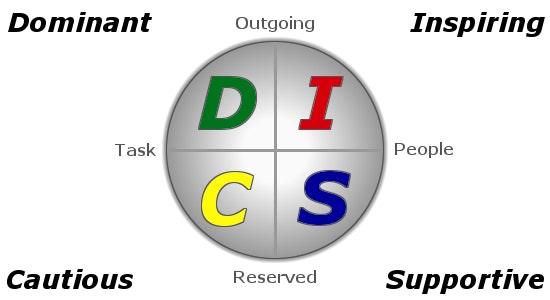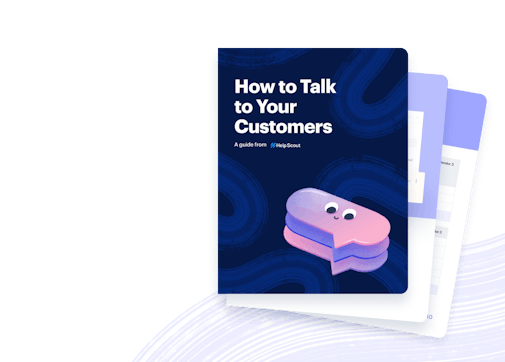Difficult customers are a fact of life. Even if they are just a tiny percentage of your community, they can feel impossible to handle.
When you work in customer service, dealing with difficult customers is part of the job, but that doesn't make it any easier. As humans, we're hardwired to care about others, so when it's evident someone is anxious or frustrated, our first reaction is to want to help. That's what customer service is about, right? Yes, but there's a bit more to it.
To do the job well, you need to balance this innate caring with strategies and skills that help you defuse rude customers in the moment. After all, just because they pay for your product or service doesn't mean they're paying for therapy or to bully your team.
No matter what type of difficult customer you're running into, remember that there is always a way to resolve the conversation without sacrificing your (or the customer's) dignity.
Different types of difficult customers
Some customers are demanding by nature; others may just be having a hard day; others still may be difficult because of confusion around your product. While it's your job to help all of them get to a satisfying resolution, we all know customer service isn't one-size-fits-all. The approach you take for each should differ slightly.
Here’s a list of a few of the difficult customers you may run into during your career in support and the kinds of messaging they respond to best.
Angry customers
Have you ever opened an email and immediately been surprised by the amount of cursing there is in the body of it? If so, then you've probably already dealt with an angry customer.
Sometimes angry customers are frustrated by a bug or perceived inefficiency within your product, and sometimes they are angry because their coffee order was wrong that morning or they fought with their partner. The cause, in this case, doesn't matter, because the method of response should always be the same.
Angry people, whatever they are mad about, need to feel heard. They don't necessarily need an explanation — they need to be validated. Take, for instance, a conversation like this:
I WENT INTO YOUR PRODUCT TODAY AND TRIED TO ACCESS THIS FEATURE THAT I USE ALL THE TIME AND IT ISN'T WHERE I LOOKED FOR IT. WHAT DID YOU DO TO YOUR PRODUCT? WHY DIDN'T YOU TELL ANYONE YOU WERE MAKING CHANGES? YOU ALL DON'T KNOW HOW TO RUN A BUSINESS. THIS ISN'T HOW YOU DO IT. ALL OF YOU ARE TOTAL IDIOTS.
This level of anger may feel pretty disproportionate, but remember that you don't know what is happening on the customer's end. There are a few things that you need to address in your response:
If someone is speaking to you abusively (e.g., "All of you are total idiots"), it's essential to address a standard of communication at the start of the email.
Acknowledge that the person has a real issue and that you hear them.
Provide a solution or try to get to the bottom of their issue if you cannot get a full resolution on the first try.
The critical thing to remember is that the point of the response is not to explain why something happened; the first course of action is to de-escalate the customer’s emotions. Here's an example of what that type of response may look like:
Hey there,
Thanks so much for emailing about this. I hear that you're feeling frustrated right now, and I totally get it.
Before we get too much further, I want to set some expectations around communicating with our team. We want to help you get to the bottom of this, and to do that, we ask that you speak with our team respectfully and kindly. That way, no more communication wires get crossed. If you continue to use derogatory language with our team, we will not provide you service.
As to your problem, we just changed our navigation bar. You're right — we should have sent an email or some messaging around it. We chose to do in-app messaging, but it looks like you have that turned off. I'll speak with our marketing team and let them know that this caused quite a bit of pain for our customers!
To find that feature, please click the button in the top right corner of your screen. It looks like this:
Screenshot
Then, click on the dropdown there, and select "Feature XYZ." That should get you where you want to go.
I get how frustrating it can be to want to find something and not be sure where to look. I hope this helps, and I'll be sure to let our team know about the strife that this caused you. Let me know if there's anything else that you want me to share with them.
Thanks! Mercer
Impatient customers
It’s easy for customers to get impatient, especially if your business has set a high standard and your customers have gotten used to a certain speed or quality of response.
If you've just recently changed your policies around specific types of responses or response times, it can be excruciating for customers to get used to a new standard of service.
Beyond that, in many help desks, if a customer emails multiple times in the same email thread, it will move that ticket up to the top of the queue because it has had a more recent activity than others. That means that sometimes people who feel like they need immediate attention ironically end up getting unintentionally pushed to the end of the line.
Here's what this type of email might look like:
12:05PM
Hi there. I'm having an issue setting up a template in your product, and I really need someone's help. Is there anyone that can help me?
12:10PM
Still waiting for help. Do you see these emails? This is urgent. I told my boss I'd have this done by 1pm today.
12:20PM
Anybody? I really need help. The last time I emailed, Debo helped me within just a few minutes. Are you reading this? I'm gonna get in trouble with my boss.
12:40PM
I've been waiting for 35 minutes for a response, and this is really mission-critical. I need help. Can't anyone help me? It's just figuring out how to make a template. My phone number is XXX-XXX-XXXX, please call me. I can't keep checking my email.
Yikes, right? The support team may not even realize the turmoil that is taking place in this email, especially if the help desk has threaded the multiple messages.
One thing you can do to help prevent this type of interaction is to set up an autoresponder that replies to every email sent into your inbox. In your autoresponder, set expectations for what kind of response time a customer can expect and any time frames in which you will not respond. This is great for teams that are only staffed in certain time zones or don't have coverage on the weekends, for instance.
Once someone from your team is able to respond, it’s important to first answer the customer’s question but also to acknowledge the pain of their waiting. Explain your response time averages and that sending multiple emails may delay your team seeing the issue and getting to a response. Set expectations for how they can expect to be treated in the future if they email in with a similarly time-constrained question.
Here's an example response:
Hey there,
Thanks so much for reaching out — I'm sorry that it took us a bit longer to respond than you were hoping for. Assuming that we are in the same time zone, it looks like we have just missed your cut-off time — I hope that you aren't in too much hot water.
To answer your question, we have some documentation about making templates here: Documentation URL. You are on a plan that offers unlimited templates, so this guide and the videos should help get you set up with the basic principles. If it doesn't, and you're still confused, let me know, and we can hop on a call, or I can get you set up with one of our webinars.
Also, I just wanted to set expectations for response times in the future, because I know it can be painful to feel like you're just left hanging in the lurch.
When you email between 8 a.m. and 5 p.m. EST, Monday through Friday, you can expect a response within two hours of your email being sent. Outside of those times, our responses are a bit more delayed — we are a pretty small team, and we're working our best to make sure everyone gets an answer quickly.
I hope all this helps, but please let me know if there's anything else I can clear up.
Thanks! Mercer
Confused customers
Confused customers are fascinating because they are more of a slow burn. Unlike angry and impatient customers, confused customers don't come to the interaction already feeling heated.
Confused customers are individuals who don't quite understand how your product or specific policies work. For instance, they might have expected a particular feature to perform a certain way or misunderstood how your refund process works.
Rather than redirecting their confusion immediately, the best way to work with confused customers is to hear them out, validate their experience, and then instruct them.
Suppose that doesn't work or you notice that the customer gets increasingly agitated. In that case, an excellent way to defuse the situation can be to hand the conversation to a colleague who can explain the same thing but in different words. Sometimes just hearing it from someone else can validate for the customer that you aren't just making things up.
Often, these customers are pretty impulsive and may not take the time to read through your whole message or listen to precisely what you're saying on the first try. This impulsivity can sometimes lead to confusion in the first place! That means that if you take your time writing out paragraphs in response, they may only read the first few sentences, think they've gotten the gist, and move on.
Keep your response short and sweet with lots of links out to other content to try to keep their attention, and remember, you can always ask one of your colleagues to step in if it feels like you're not getting anywhere.
Using AI tools to help respond in difficult situations
Some support platforms have AI features that help agents respond during challenging customer interactions. For instance, Help Scout’s AI assist and AI summarize can help you:
Keep responses short and sweet:
AI assist can shorten a wordy reply, making it easier for customers to read and understand.
Provide good internal notes when handing off a case:
AI summarize can condense an entire conversation thread into concise bullet points with only one click.
This makes it easier for teammates to catch up when taking over a case and helps avoid further agitating the customer by asking them to repeat themselves.
Know-it-all customers
Have you ever had a customer say "Don't you know who I am?" to you in response to a support conversation? Know-it-alls are difficult customers who almost everyone has had to deal with.
Because they need to show off their importance and knowledge, they may be highly critical of what you have to say. If on the phone or over video chat, they may tend to talk over you and dominate the conversation.
With difficult customers like these, it’s hard to change their beliefs or convince them that they might not have all the information.
Rather than correcting them or resetting their assumptions, try to compliment their knowledge and give them good attention. Often, know-it-all customers don't have anything they need direct help with — they just want to offer insights on how they believe you could be doing things better.
Here's an example:
Hey all,
I wanted to let you know that while I was using your editor, I had a lot of trouble with the drag-and-drop components. I've worked in this industry for a really long time (you might recognize the domain in my email address), and this is the first time I've ever seen a product that doesn't have search functionality for specific types of add-ons within the editor. Is there a reason you did that? I honestly can't think of one.
I think you'd be serving your customers much better if you added this search functionality and also if you added a few other add-ons. If this doesn't change, you'll probably lose many customers, including me. There are tons of other products that offer this functionality, and I'm honestly thinking about going and using one of them instead if you aren't willing to change. Plus, I pay you a lot, so my opinion should be worth something, right?
A lot is going on in this email. It seems like a very detailed feature request at face value, but there's an undercurrent of passive aggression. The customer is threatening to leave if you don't make this change. They name-drop the company they work for and flaunt the point that they pay you a fair amount of money.
It's essential to validate all of these things while still setting the expectation of how soon they might be able to expect your team to make this change. Here's an example response:
Hey there!
Thanks so much for reaching out about this — you've made some excellent points. I noticed that you've been a customer of ours for three years and have submitted tons of other thoughts on improving our product. It's obvious that you really care about the work that we are doing here.
Right now, we aren't planning on adding search functionality to our editor, but I could see how that would be helpful! I'd also love to hear a bit more about the other add-ons that you think would make good additions. Our team is always looking to add additional functionality to our builder, and as a super-user, you probably have lots of great ideas.
I'm sorry that I can't give a more detailed timeline for when we might add something like this, but right now, we have some other great things planned for the coming year. I'd be happy to share some information about the roadmap with you if you're keen to get a sneak peek at what's coming down the pike.
Either way, I'll be sure that our product team sees your email, so feel free to let me know if you have any additional details that you'd like me to log with them.
Thanks, Mercer
The response addresses how long the customer has been a user and how many feature requests they've submitted. The tone is respectful while still imparting important information about this feature request not being on the company roadmap.
The response doesn't address the threat to leave as it seemed somewhat veiled, but it does include a request for more information. If the customer intends to leave, they can provide more details in their follow-up response.
Complaining customers
Like the know-it-alls, the complainers have many opinions about what you can change about your product and how you should do it. These are the types of customers you may get 50+ emails from every year, especially if your team indulges them and makes them feel properly heard.
While these difficult customers are undoubtedly time-consuming, they can be less painful than other types. Often, your response to a complainer just needs to acknowledge their complaint and validate that you understand where they are coming from. Occasionally, you may be able to provide a workaround or advice on how they can change their workflow to make things a bit easier.
Working with complainers can feel like death by a thousand paper cuts, but often it's a blessing. Instead of taking every email personally or rolling your eyes when you see their name in your inbox, see them for the passionate fans of your company that they are. Someone who didn't care as much about improving the product or the ongoing longevity of your service wouldn't take the time to reach out to you every time something came to mind.
While not every complaint will be constructive, be sure not to automatically ignore something that a complainer says. Track their requests just like you would with a customer who doesn't email you every week with product thoughts.
In your response, let them know that you've heard and tracked their input or request, and provide any additional information you can about whether this is something your team is already considering or has on the roadmap.
Chatty customers
There are tons of lonely people in the world, especially during a global pandemic. Sometimes support team members will have customers who just don't want to get off the phone, end the chat, or finish the email.
Chatty customers are difficult, not because they are painful to deal with, but because they are challenging to disengage in a kind and respectful way. After all, there are other conversations that you need to answer, and as lovely as it can be just to exchange pleasantries with another human being for a while, it's not what you're getting paid to do.
Sometimes these conversations will just look like a chat between friends. Other times, it seems that the customer comes up with another question to ask right at the very end. The method for handling these different scenarios is the same.
Let the customer talk. Respond to them courteously, whether that's to answer a question or just to say, "Yep! Totally relatable!" While you're doing this, set a time limit for yourself. Once the time limit is up or it seems like they are running out of steam (if that happens first), ask them directly if there is something that you can provide an answer for: "Yep, these are some really great points. I can totally see how you'd feel that way. Is there anything that I can directly help you with right now?"
This response is a reliable way to move the conversation along (or end it) without being dismissive. After all, these chatty customers aren't being rude or aggressive — they might just need a friend.
Impossible-to-please customers
Sometimes, no matter what you say to your customer, they will be angry or disappointed. It might be right from the start or it might be after a little bit of back and forth, but it's pretty easy to tell when someone is approaching the edge. A few key phrases you might look for are:
I can't believe…
I'm tired of going back and forth…
Did you really just…
Do you have any idea…
How can you…
In all of my time working with your company…
I don't care, just fix it…
Sometimes responding can feel like you're about to step into the deep end without knowing how to swim. But no matter how intimidated you may feel, you can't leave these difficult customers without a response.
First, thank the customer for reaching out. Then, acknowledge the issue that they're frustrated by, align with them, and assure them that you are either working toward a fix or provide an answer to their inquiry if you have one. Most of all, remember not to take anything personally.
If these steps don't work and they are still acting angrily, see if you can find an executive sponsor or manager on your team to step in. Sometimes, people just want to feel like you've connected them with a Very Important Person.
Remember, if anyone gets verbally violent or abusive, your team probably has a policy in place. Speak to a manager and see what you can do to get additional support if someone speaks to you in an offensive or abusive way.
9 tips and strategies for dealing with difficult customers
While specific strategies work particularly well for each type of difficult customer, there are also generalized strategies that teams can put in place to make things easier. We've talked to some customer service pros and asked them what made the most significant impact for them and their team.
Practice these tips and strategies every day, even with easier customers, and you'll feel like a superhero deflecting negativity when the time comes.
1. Prepare in advance
Knowing how to deal with rude customers depends directly on your product or service knowledge in any customer service role. Building a solid foundation — and working toward mastery — becomes even more essential when you're dealing with someone who's testing your limits.
The sooner you can get the mechanics of your role down, the more effortless and nuanced you can be throughout these charged moments. This same "prepare in advance" ethos extends to educating yourself about your customers.
Katherine Yasi, director of customer support and onboarding at Optimizely, always dives into the customer's profile before getting on a call. Are there any open support tickets, negative customer NPS surveys, or notes connected to this customer? These details give you context and a sense of their likely response.
2. Recognize the opportunity in failure
The good news about dealing with difficult customers is that you can more than make up for the issue that started it if you address and solve their problem. The service recovery paradox states that there's an opportunity to transform rude customers into loyal patrons in every customer service failure. So, you can benefit from higher customer satisfaction levels than you would have if nothing went wrong.
Lindsay Howard, the wine director at Island Creek Oyster Bar in Boston, says she's learned the same thing in her ten years in the hospitality business:
"My biggest successes have been when someone is really upset with my selection from our wine list, but I still happen to find something special from my cellar to offer them. Those moments are when I feel like I have done my job right."
When you enter a challenging situation, take a moment to make a mental shift. If you can remember that every difficult customer is a worthy challenge, it will be easier to manage it step by step.
3. Change channels
Sometimes it can be tempting to try to contain a customer interaction to emails or cut off a conversation for time's sake. That's especially the case if a customer is being overly aggressive or if you are feeling stretched thin.
However, doing the opposite and giving customers the space they need to vent can be the more efficient, effective solution. Plus, videos and phone calls provide access to additional interpersonal cues that may help, like visual tricks and verbal responses.
Nathanael Newby-Kew, the associate director of customer support at Skyword, believes that increasing the level of interaction brings a sense of concern to the conversation that people appreciate:
"If you're communicating over email, hop on the phone or escalate to the next level of support to show them you're taking the situation seriously."
Next time you're dreading a tough call, remember that it's always going to be better than handling difficult customers over email. Here, customers can have the space they need to vent, and they know you are hearing them, which sometimes is a resolution in itself.
4. Adapt to your customer's personality
We all have different personalities, and the same goes for rude customers. One way to make challenging interactions better is to adapt your approach to their approach. The DISC framework, often used in sales, is just as effective in customer service.
Start by identifying the customer's personality type (one of four), and offer a solution you've catered to the way they like to problem-solve.

Tyler Haire, a marketing strategist who worked in bilingual customer support and success for eight years, says using this framework revolutionized his day-to-day interactions. "I could really help difficult customers in a way that they could accept. It was remarkably spot-on."
At Skyword, Newby-Kew took a similar approach to a highly detail-oriented customer (definitely a C personality). The customer kept submitting separate tickets for every issue he came across in their platform, and it became a tangled mess of complaints that frustrated everyone on the support team.
"We ended up hopping on a call and sharing a spreadsheet that detailed which of his issues had been resolved and which were in progress. We then had him rank his priorities and created a new email chain for each issue with a reference number he agreed to include."
By tracking and documenting the issues, Newby-Kew tailored his approach to the customer and came to a resolution.
5. Keep your boundaries
Even if you have a solid handle on approaching rude customers, it's still not easy to experience abrasive language and even abuse. Everyone has a horrific example of dealing with a difficult customer. Howard has had people yell curse words in her face, stomp like children, and threaten to have her fired.
To do her job well, she needed to walk a fine line between expressing empathy and maintaining boundaries — and you need to, too.
Remember, while identifying with the customer makes it easier for you to be effective at your job, getting emotionally involved is just a quick road to burnout. You don't need to be an emotional sponge; just be an active, open listener to your customer and help them get to a resolution.
6. Apologize sincerely
An effective apology meets a few essential requirements: It's short, sweet, and sincere. But when you're dealing with rude customers, it's easy to veer too far in one direction or the other. You can react to their negativity with an insincere "sorry" or over-apologize and ramble way too much in reaction to their distress. Work on getting comfortable with your middle ground to feel natural even in a tense situation:
Don't: "Hmm, that's not good."
Don't: "Oh my gosh, I'm so sorry — how did that happen? Yikes! What a terrible mistake. I just can't apologize enough … this is absolutely horrendous. I feel awful. What a mess you're in."
Do: "I'm so sorry that our team fell short yesterday. We have high standards, and we didn't meet them with that delivery time. Let's get this sorted out right now."
When you apologize, own up to any shortcomings on your company's end. Even though it may be hard to do when you're up against an irrational reaction, it's the honest way forward.
7. Tell the truth
Once you've apologized effectively, get to the crux of the problem. Sometimes there isn't a solution yet. It's tough to be the bearer of bad news, but lying to difficult customers never helps the ultimate goal of driving customer loyalty.
In situations where you don't have a resolution just yet, be transparent and clear. For example, Yasi needed to navigate a software integration issue with a customer. He demanded a concrete timeline, but her team didn't have that information.
"I looped in our VP of Engineering, and we had to have a straightforward conversation with the client that a timeline was unrealistic. We shared that we're committed to resolving all the issues and providing a timeline when we had the data we needed."
Even if you can't deliver a solution, create a plan and deliver that plan with confidence. Ultimately, customers want to know that you're putting in the effort to meet their needs for the long term and you're willing to follow up until it happens.
8. Lean on your team
Even when you're putting all your skills to work, you can be in way over your head. That's natural — you're not supposed to know everything. Figuring out how to deal with difficult customers often requires that you ask for help.
When Haire worked in healthcare support, he connected people with mental health challenges to treatment options — all in Haire's second language, Spanish.
One day, a man called in for help while experiencing suicidal thoughts. "It was difficult at first to understand what was going on because I thought the client was under the influence of drugs, but once I identified the situation, I was able to escalate the conversation to a clinician. We got him the help he needed," says Haire.
Haire remembers the biggest takeaway from that challenging situation: Even though you're on the front lines dealing with customers in the role, there is a team behind you that can give you support. Never be afraid to ask for what you need.
9. Get creative when making things right
In the hospitality industry, the traditional "fix-all" for big goof-ups is to comp the meal for the guest. In ecommerce, it's a whopper of a discount or an exchange. Going beyond these industry norms, though, makes it more likely that customers have a change of heart.
When Howard encounters a challenging scenario, she sends cards, emails, delivers gifts to customers' homes, or gives disappointed customers bottles of wine.
"I get more creative than I used to. I've even called ahead to other restaurants where a customer regularly dines and purchased a bottle of champagne for them in advance."
People love it. Not only is her approach generous, but it's also unexpected. Give it a try. Over time, you'll become an expert at turning a terrible experience into a reason for a customer to love you forever.
Difficult customers need love, too
Even when your customers come at you angrily, it's important to remember that it's not about you. They might just be having a rough day on the other side of the email exchange, and it's a potential opportunity for you to help them turn it around.
Use active listening, and acknowledge their frustration to help your customers feel seen and heard. Get to the bottom of an issue as much as you can before responding to avoid further complicating the situation. Make sure you understand precisely what they are upset about, or ask for more information if you're not sure.
Difficult customers are precious. If their experiences get turned around, they can be even more passionate brand fans than even your customers that have seen nothing but your best. Don't miss out!









